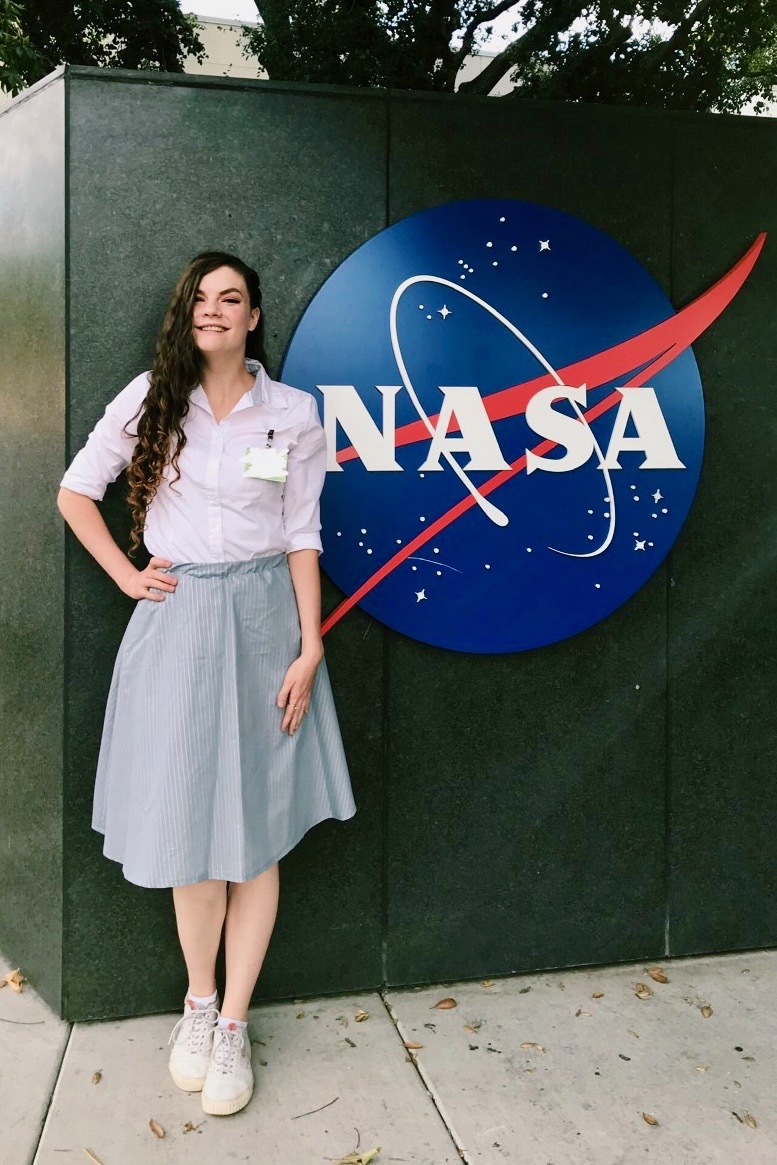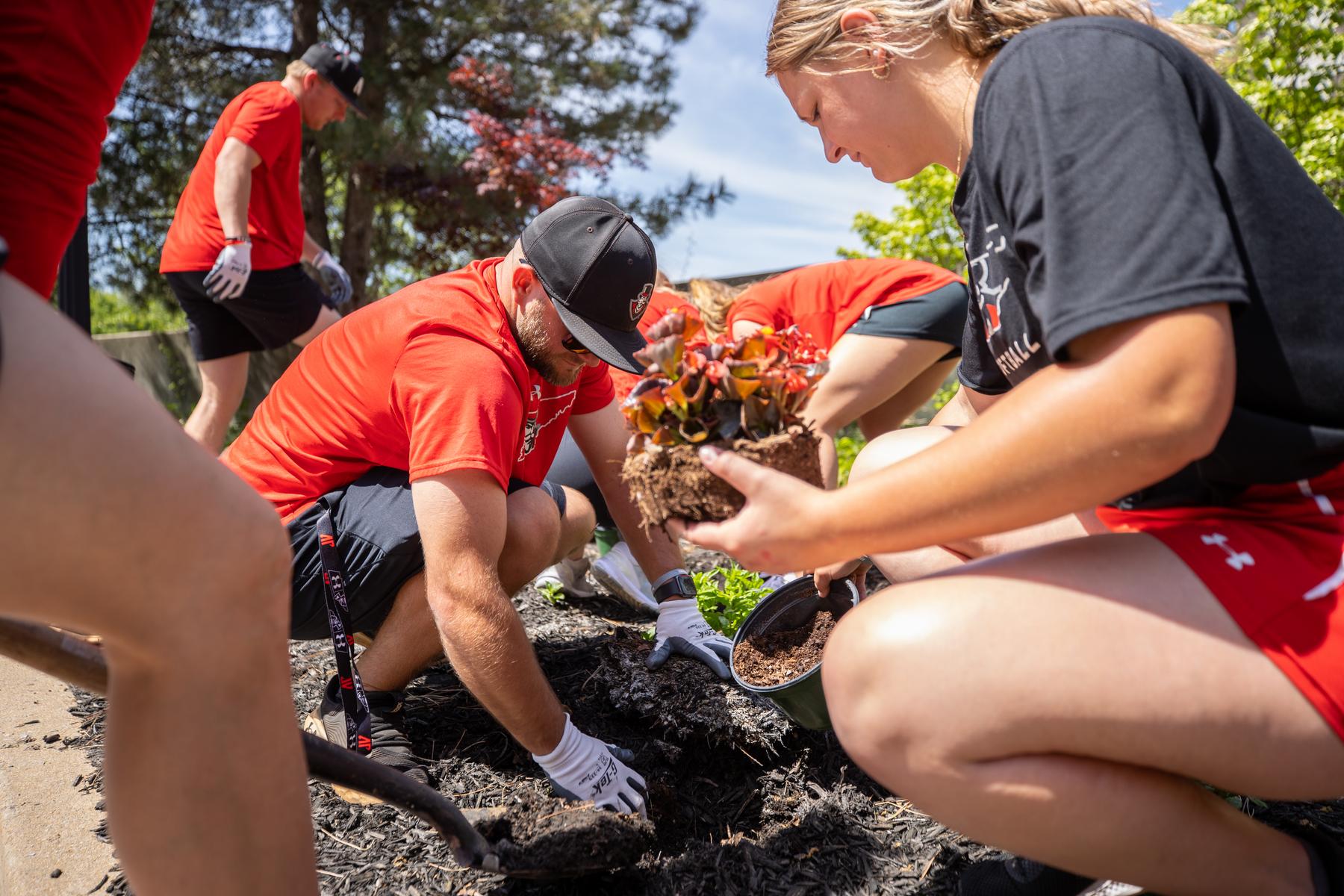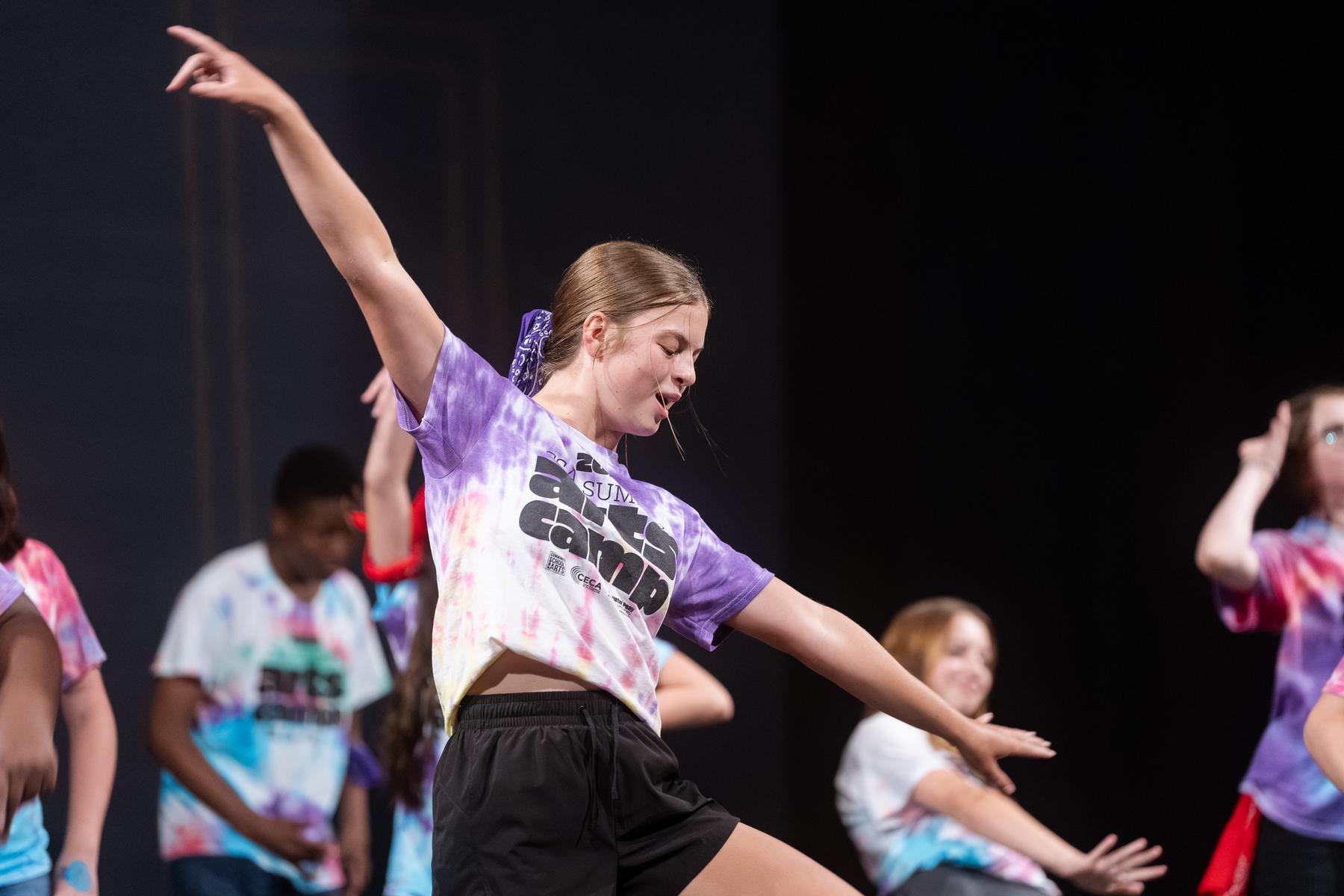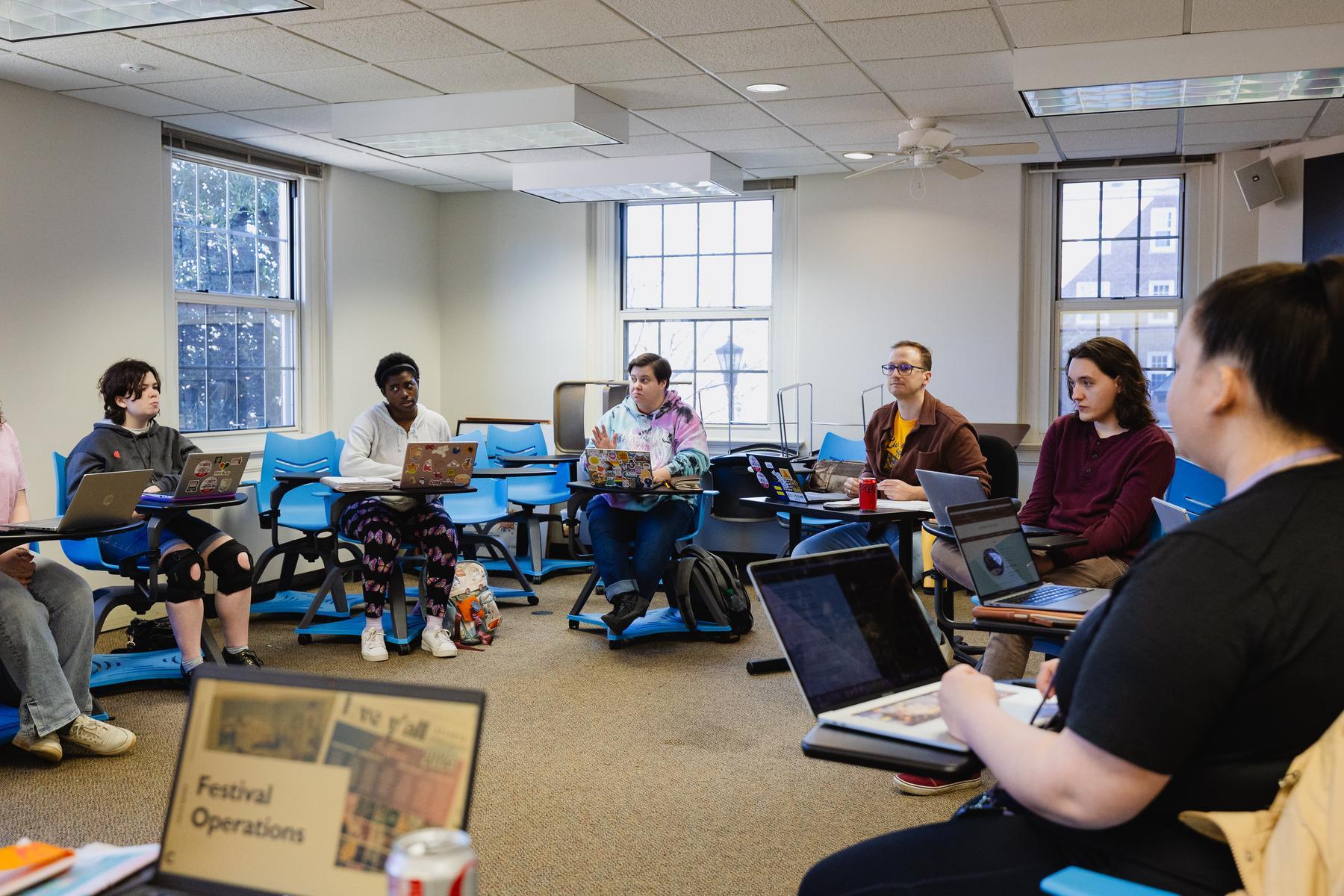Austin Peay physics graduate to spend 10 months at South Pole
(Posted Sept. 26, 2019)

An Austin Peay State University graduate is heading to the South Pole in January to perform seismology observations of the Solar System’s largest planet. She’ll be there – during winter – for 10 months.
In doing so, physics graduate Deborah Gulledge – now a graduate student at Georgia State University – will be one of only about 1,600 people ever to spend a winter at the pole. And she might be on the first team in history to prove whether Jupiter has a solid core.
“The news is easily the most exciting news I’ve ever received,” Gulledge said. “I’ve been hoping to go to the Pole for years and have been working toward it for months. I feel exhilarated and nervous and unbelievably happy — like I’m on top of the world, because I’m about to go to the bottom of it.”
Gulledge is in Hawaii preparing for the South Pole mission helping build a telescope to observe Jupiter and its seismology. The team hopes the telescope can measure the sound waves traveling through the planet and use the measurements to map Jupiter’s internal structure, she said.
“The big question we really want to answer is ‘does Jupiter have a solid core?’” Gulledge said. “And the only place we can get sensitive enough measurements to answer this is at the South Pole.”
‘WINTERING OVER’ AT THE SOUTH POLE

Gulledge and the team start their journey to the South Pole the first week of January. They’ll fly to Christchurch, New Zealand, then to McMurdo Station on the coast of Antarctica. A final flight will carry them to the Amundsen-Scott South Pole Station at the South Pole.
The temperature recorded at 12:48 a.m. Sept. 26 at Amundsen-Scott was minus-78 degrees Fahrenheit (the wind made it feel much colder, though – minus-117 degrees Fahrenheit), according to the National Science Foundation website.
“It’ll be summer when I get there, constant sunlight until mid-March,” Gulledge said. “Then it’s on to the exciting part: winter and constant darkness for half a year, until the long winter ends in September.”
She’s scheduled to be at the South Pole station until mid-November. She’ll be with only about 40 people “wintering over.”
When she arrives, Gulledge will help assemble the telescope on the ice, troubleshooting problems and getting the telescope running.
“The rest of the team will head home when summer ends, leaving Cody Shaw (a Ph.D. student from the University of Hawaii) and myself at the end of the world for the winter,” Gulledge said.
Shaw has “done an incredible amount of work designing and building” the telescope, she added.
OPPORTUNITIES FOR BREAKTHROUGHS
“The main work will be running the telescope and working with the data we collect,” Gulledge said. “But all the winter-overs also help keep the station running, so there’s lots of other things I might work on – helping in the hydroponics garden, cooking, cleaning, firefighting, whatever needs to be done.”
She’ll also use the time to work on her dissertation, the seismology of gas giants.
“Getting a chance to collect and work with this amazing data will help me write a strong dissertation and make a big contribution to the scientific community,” Gulledge said. “There are opportunities to make some really big breakthroughs here, and I’m excited to be part of the forefront of a new field.”
She has even loftier goals.
“I love observing the stars, but I want to make it to them too,” Gulledge said. “After I graduate, I plan to apply to the astronaut corps. I believe the experience living and working in the most unforgiving, most isolated place on our planet is invaluable training for one day working in the most extreme environment known to humanity – space.”
TO LEARN MORE
- For more about Austin Peay’s Department of Physics, Engineering and Astronomy, go to apsu.edu/physics/.
- To see live webcams of Amundsen-Scott South Pole Station, go to usap.gov/videoclipsandmaps/spwebcam.cfm.
- Gulledge also is a National Science Foundation fellow. Read more here: apsu.edu/news/april-2019-austin-peay-national-science-foundation-fellows.php.
News Feed
View All News Earth Week at APSU: Community invited to 'Plant the Campus Red,' test drive electric vehicles
Earth Week at APSU: Community invited to 'Plant the Campus Red,' test drive electric vehiclesAustin Peay State University will host two Earth Week events in April, including an Earth Day Fair and Electric Vehicle Ride and Drive event on April 22 and the annual Plant the Campus Red on April 24.
Read More Austin Peay's CSA Summer Arts Camp opens for registration
Austin Peay's CSA Summer Arts Camp opens for registrationThe Community School of the Arts is hosting a space-themed Summer Arts Camp with two weeklong sessions in July, and families can register now through May 23.
Read More APSU hosting inaugural Zone 3 Writers' Festival from April 10-12
APSU hosting inaugural Zone 3 Writers' Festival from April 10-12Austin Peay State University will host its inaugural Zone 3 Writers' Festival featuring readings, panels, and workshops from April 10-12, welcoming writers from across the country.
Read More